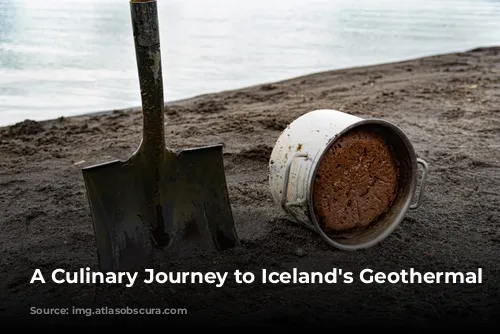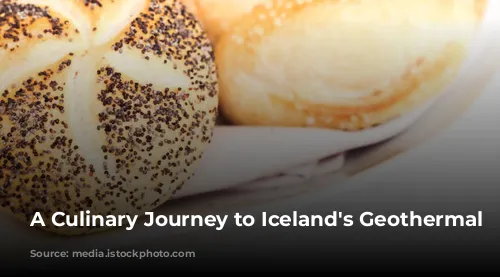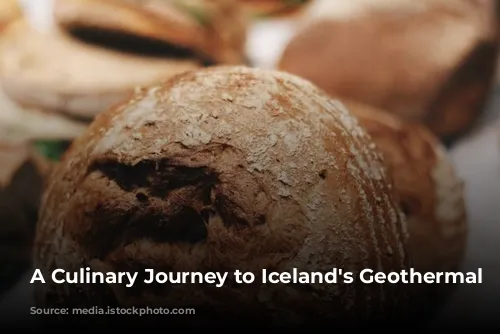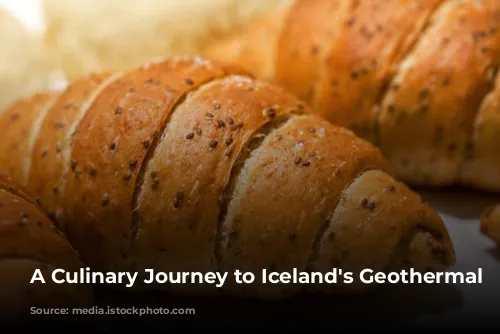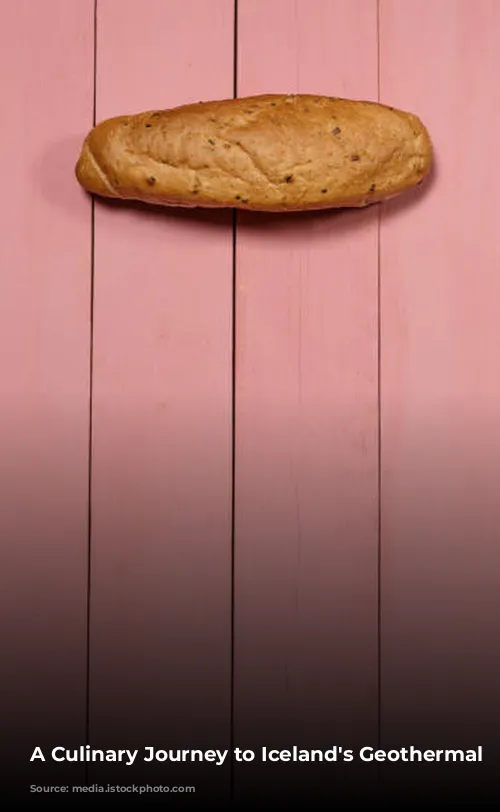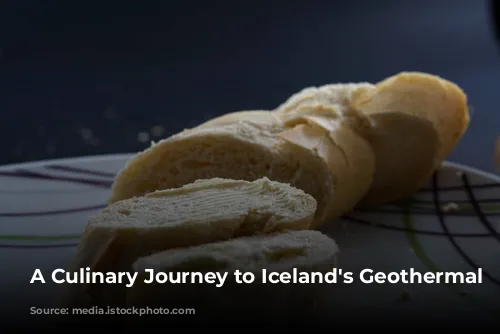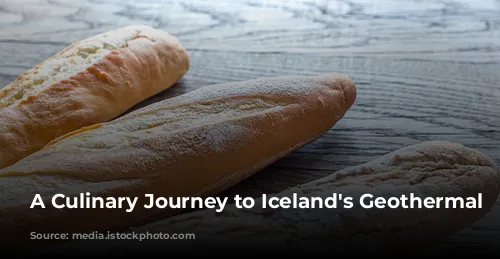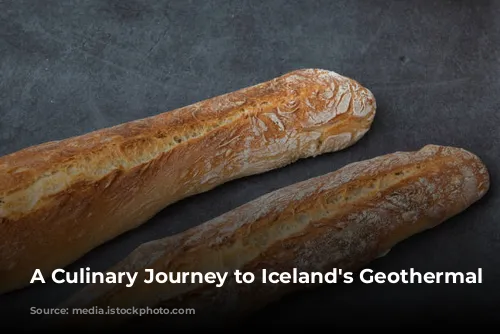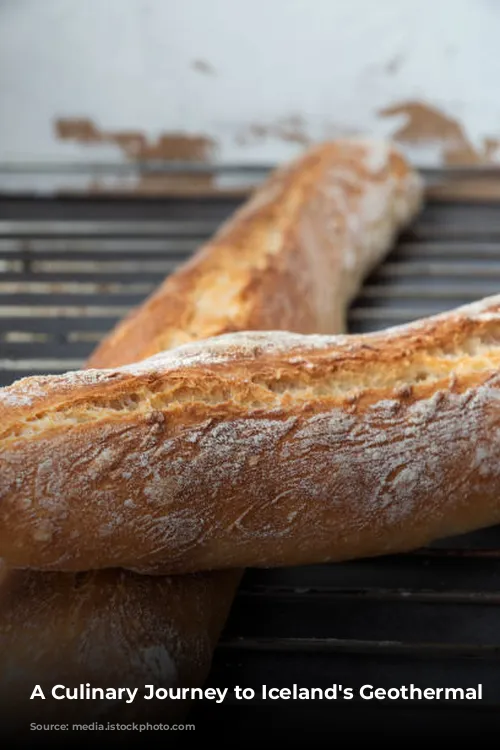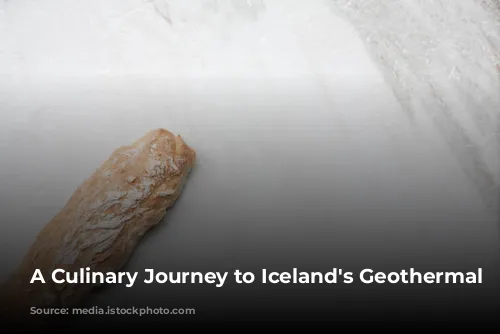Imagine this: a crisp September afternoon, the air tinged with the aroma of sulfur, your feet sinking into warm black sand. You’re in Iceland, on the shores of Lake Laugarvatn, embarking on a unique culinary adventure.
The Secret of Hverabrauð
The journey begins with our guide leading us past bubbling hot springs, a testament to Iceland’s geological wonders. We reach a sand mound, and with a shovel in hand, he starts digging. Buried beneath the sand, a stainless-steel pot simmers in the hot water. With a flourish, the lid is lifted, revealing a golden-brown loaf of hverabrauð – a rye bread baked in the earth’s heat for 24 hours.
This isn’t just any ordinary bread. The hverabrauð, traditionally cooked in the geothermal springs, is a delicious fusion of nature and culinary skill. After slicing the bread, we slather it with butter and top it with smoked trout, a local delicacy straight from the lake. The first bite is a revelation – a sweet, soft, but dense and cakey texture that begs for seconds.
A Culinary Legacy
Laugarvatn, once a barren region, has become a popular stop along the Golden Circle, drawing visitors for its breathtaking waterfalls and mesmerizing hot springs. This geothermal activity is fueled by the Mid-Atlantic Ridge, where the Eurasian and North American tectonic plates meet. The slow movement of these plates pushes molten rock and gas towards the earth’s surface, creating Iceland’s geothermal wonders.
For over a century, the Laugarvatn community has been utilizing this geothermal energy to cook and heat their homes. Sigurður “Siggi” Rafn Hilmarsson, a native of Laugarvatn, learned the art of making hot-springs bread from his grandmother. Today, he is the chef and general manager of Laugarvatn Fontana, a geothermal spa and bakery, where he continues to bake this traditional bread.
A Recipe for Success
Siggi’s infectious laughter and Icelandic accent paint a vivid picture of his culinary journey. He recalls the time he invited guests to join him on his daily walk to retrieve his baked hverabrauð from the hot springs. The response was overwhelming. Eighty people waited for him at the hotel, eager to experience this unique bread. That day, Siggi realized the potential of his grandmother’s recipe, and in 2011, he opened his bakery and spa, offering daily tours showcasing the art of hverabrauð baking.
Siggi has finally decided to share his grandmother’s secret recipe with the world. The recipe combines rye flour, all-purpose flour, sugar, baking powder, and salt, then blends in cow’s milk. But it’s the temperature, depth, and slow-cooking process in the hot-springs sand that gives the bread its distinctive sweet and cakey texture.
The Unexpected Challenges of Volcanic Baking
There are some challenges to baking in such a dynamic environment. Sometimes, the nearby glaciers melt, causing the lake to flood. “This doesn’t always happen, but when it does, our breads turn into a bread soup,” Siggi says with a chuckle. “You don’t want to eat it then.”
After our group finishes our meal, the guide places a fresh pot of dough in the same hole, covering it with sand and a large stone, signifying that a new batch of hverabrauð is baking beneath. This cycle continues, with 10 to 15 pots of bread cooking in the sand every 24 hours.
A Legacy of Geothermal Baking
Siggi, a lifelong resident of Laugarvatn, marvels at the geological wonders that surround him. “I’m really fortunate to live here,” he says. “From past generations, I have learned to respect this energy and handle it with care.”
The hverabrauð is a testament to the ingenuity of the people of Laugarvatn, who have learned to harness the power of the earth to create a delicious and unique culinary experience. As we bid farewell to the shores of Lake Laugarvatn, the aroma of freshly baked bread and the warmth of the hot springs linger in the air, a reminder of the beauty and wonder that nature can offer.
